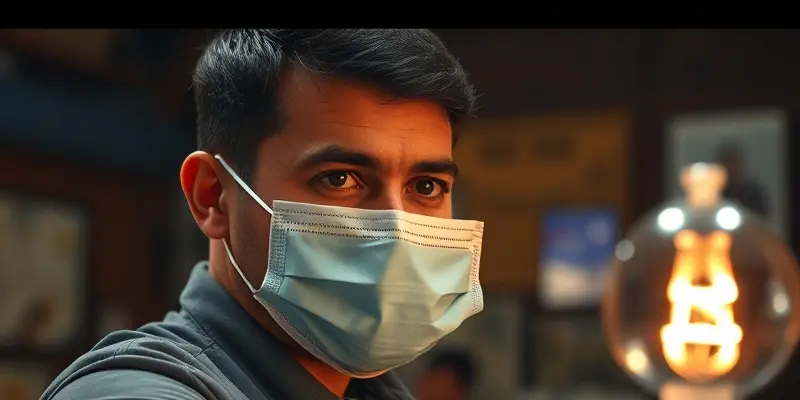The Athlete’s Mindset: Recovery, Resilience, and Reducing Injury
In every gym or sports field, injuries can happen to anyone—from beginners lacing up their first pair of sneakers to elite athletes chasing personal records. But what separates lasting setbacks from strong comebacks? It all comes down to adopting an international athlete’s mindset: prioritize prevention, proactive recovery, and mental toughness.
Let’s break down practical, evidence-based ways to reduce injury, recover smarter, and regain your motivation—no matter your fitness level.
Common Injuries in Sport & Fitness
We’ve all heard the stories—a twisted ankle during a run, a strained shoulder after an epic gym session. Here are some of the most common injuries faced by athletes and enthusiasts alike:
- Strains & sprains: Overstretching muscles or ligaments, often from sudden movements or fatigue.
- Overuse injuries: Think runner’s knee or tennis elbow—these creep up from repetitive motions.
- Joint injuries: ACL tears, dislocated shoulders, and similar ailments, often seen in dynamic sports.
- Fractures: Usually from impact, falls, or, at times, bone fatigue.
Real-world example: Jess, a weekend soccer player, suffered a mild hamstring strain from skipping her warm-up and pushing too hard on game day. With simple adjustments, she could have stayed in the game.
Prevention: Building Your Injury Shield
Most injuries are preventable! Think of prevention as layering your defenses, just like assembling Batman’s utility belt.
- Perfect your form: Technique trumps brute force. Invest time in learning proper movements before increasing intensity.
- Dynamic warm-up and cool-down: Prepare your muscles for action and help them wind down properly.
- Strength and conditioning: Focus on balanced muscle groups, joint stability, and flexibility with targeted exercises (like squats, planks, or yoga).
- Wear the right gear: Use properly-fitted shoes, helmets, mouthguards, or pads as required. Regularly check if your equipment needs replacing.
- Schedule rest: Allow muscles time to repair—rest days are as essential as workout days.
These steps help you train longer, safer, and with better results.
Smart Recovery: Healing with Intention
If injury strikes, the way you manage recovery can make all the difference.
- RICE protocol: Rest, Ice, Compression, and Elevation—perfect for sprains or mild strains. Don’t push through pain!
- Seek professional assessment: A physio or sports doctor can diagnose and craft a tailored rehab plan.
- Gradual return: Use the “StaRRt” approach—gradually stress the injured area, listening to pain signals, and advancing only when safe.
- Follow physical therapy: These exercises help restore strength, flexibility, and movement patterns for lasting resilience.
Motivational tip: Think of recovery as part of your training. Champions spend as much energy on rehab as they do on performance. For more detailed steps, check out our injury recovery checklist.
Nutrition & Technology: Boosting Your Recovery
What you eat and the tools you use can accelerate healing.
- Protein-rich foods: Chicken, tofu, eggs, or legumes support muscle repair.
- Micronutrients: Vitamin C (bell peppers, berries), vitamin D and calcium (fortified dairy, sunlight, leafy greens), plus omega-3s (salmon, walnuts). Learn more about the role of vitamin C immunity athletes and calcium for bone strength in recovery.
- Hydration: Sip water throughout the day—joint tissues depend on it!
Modern gadgets can help too:
- Compression sleeves and devices: Reduce swelling and improve circulation.
- Foam rollers and massage guns: Relieve muscle knots and speed up loosening of stiff tissues.
- Wearable trackers: Monitor sleep and training load for smarter decisions about rest and ramp-up.
Building Mental Resilience: Motivation Through Setbacks
Injuries don’t just tax the body—they challenge the mind. Stay positive with these evidence-backed tools:
- Set achievable mini-goals: Measure progress step by step (e.g., regaining range of motion or walking pain-free).
- Visualization: Picture yourself succeeding in your sport, even during downtime. Explore the benefits of visualization for healing.
- Lean on your support team: Coaches, friends, or mental health pros play a key role in motivation.
- Reframe the setback: Use injury as a learning opportunity to come back stronger, smarter, and more self-aware.
Conclusion: Return Stronger, Stay Safer
Prioritizing injury prevention and intentional recovery is your ticket to a longer, healthier, and more fulfilling fitness journey. Remember: listen to your body, embrace rest days, nourish with purpose, and treat setbacks as springboards for growth.
Have questions or want more personalized advice? The GymPulse Club is here to support your comeback. Stay strong—your best athletic self is still ahead!

